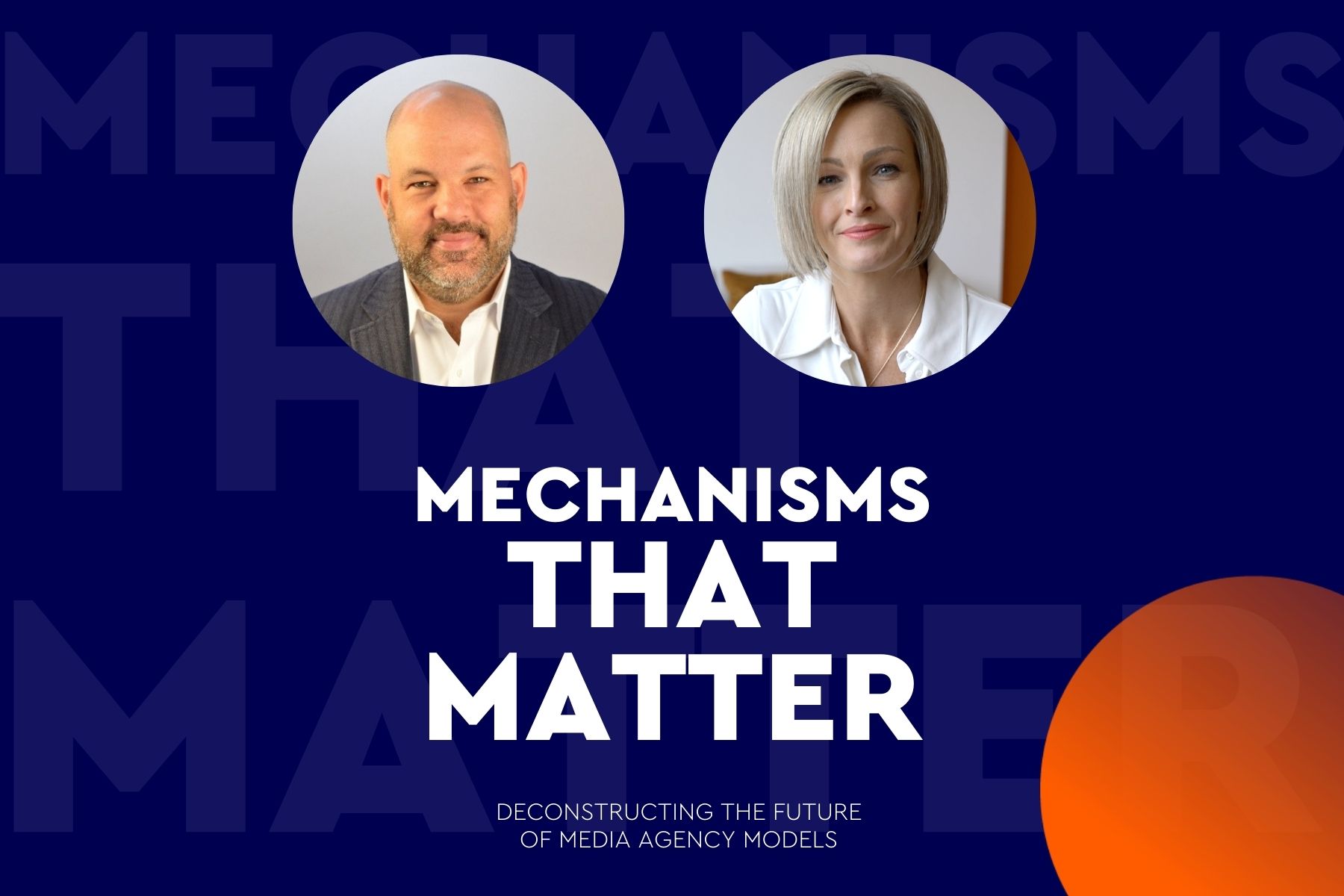Inclusion champions: Sunetro Lahiri and Florencia Spinetta
LGBTQIA+ representation in advertising and the importance of carving out safe spaces for unfiltered conversations
Show this article in Chinese, French, Portuguese (BR), Spanish
To coincide with the meeting of WPP’s new global Inclusion Council in September, and National Inclusion Week across the UK, WPP is bringing together 12 changemakers from across the network. These individuals are driving key conversations around inclusion and diversity and the industry-wide agenda forward. Across six conversations they discuss action, initiatives, and the power of advertising and marketing to create change in wider society.
Sunetro Lahiri, AVP (Creative), The Glitch, Mumbai, and Florencia Spinetta, Chief Operating Officer, Santo, Buenos Aires, talk about LGBTQIA+ representation in advertising, the importance of carving out safe spaces for unfiltered conversations and how creative transformation means constantly trying to move the needle.
Sunetro Lahiri, AVP (Creative), The Glitch (He/Him): I've always wanted to just tell stories. I wanted to make beautiful things and I wanted to see things on screen that made me happy. This industry has allowed me that. It crafts new landscapes, but it still allows you to root yourself in reality – advertising allows you that kind of world-building.
Florencia Spinetta, Chief Operating Officer, Santo (She/Hers): Have you ever encountered any challenges or obstacles during your time in the industry?
SL: Not really on an organisational level, but if I'm looking at what queer people and queer people of colour have to encounter, there are a lot of microaggressions. There are people not learning or respecting others’ pronouns, which in 2020 should be a given. It may not be in situations I have encountered, but when you see it around you, it incenses you.
Similarly, if you're showing different kinds of relationships and different kinds of families in the world of advertising, why is the queer representation almost a sign-off? Why is it a tagline? Why is it the twist in the story? For me, that's one of the challenges I have experienced because I've had to push against the world to showcase two boys coming closer together in an ad. For me it becomes a personal vendetta almost to say I'm not doing this to get eyeballs on the ad, I'm doing this for representation. It’s so important for me to put it out there that this isn't coming from an emotional place, this is just coming from, "Hey, I'm part of a larger community, and I understand that this community wants to see themselves. So, maybe you might want to listen to me."
I think that's been one of the struggles in a country (like India) where extreme liberalism and conservatism live side by side.
Have you encountered similar challenges in your career?
FS: I think we all have challenges and one of the things that I try to do is take obstacles and turn them into challenges that I can overcome – that's led me to my current position. Of course, as a woman, I have faced obstacles throughout my career. However, I am also very lucky in that I have lived through a transition in terms of how women are seen in the workplace. Within our agency I've always felt there was a place for my voice and I've always been encouraged to grow. While there is still a long way to go for women, I think I’ve been living in the right place at the right time.
I have lived through a transition in terms of how women are seen in the workplace. Within our agency I've always felt there was a place for my voice and I've always been encouraged to grow.
SL: One of the things I have realised is that, while I'm a queer person, as a cis male, I have certain privileges. It's very important for me to use that in a way that disperses some of the privilege that has built up over time, from the age-old patriarchal blocks.
Last year, I started a podcast which has quickly become one of the leading queer podcasts in India. It’s called GayBCD and it's basically the alphabet of all things queer. The podcast and really putting my voice out there, honest and unfiltered, is another aspect I feel that diversity is all about. I keep saying this: you can't be what you can't see, or you can't be what you can't hear. It's so important for people to hear. If I, as a person in the marketing field, is comfortable wearing shoes with four-inch heels and walking into an office and still being respected for who I am as a professional, and if someone hears that, they won't be scared of being themselves in a workplace anymore.
FS: I completely agree that carving out spaces for these conversations is really important and actually the work we’ve been doing for Sprite since 2018 speaks to this. First, we did the Love Your Hater campaign, which focused on Gen Z. Then we did the You're Not Alone campaign, which really spoke to teenagers who don't really know how to speak about bodily issues, about sexual identity, and we created a space/forum where they could speak about this anonymously and with others.
And then under the same You're Not Alone banner, we launched Pride last November, during the Gay Pride Parade in Argentina. We looked for people with real stories. It was very emotional hearing these stories and I was very proud to be a part of it.
It goes beyond the awards that it's received. The biggest prize is that it resonated with this target audience and that it really touched them.
Do you think there's been a shift around the way people are talking about inclusion and diversity recently?
SL: 100% and some places probably even more so than in India. Some people are still yet to jump on the bandwagon, but definitely, workplaces are becoming a lot more aware of what's right and what's wrong, and honestly, I think we owe it to the #MeToo movement. It started there.
Why should gender, ethnicity and sexuality have to factor into any kind of career journey? That's why more and more organisations are adopting colour-blind and gender-blind hiring processes. I will say that it takes the leaders to change it. It takes the CEOs and COOs and CCOs to say, "You know what? From today onwards we change because this way doesn’t work." I'm really fortunate to be part of an organisation such as The Glitch which is like that – an organisation that is completely blind in terms of these categorisations.
FS: I think that we're living through a transformation right now. There are more and more conversations about this in workplaces.
From the companies and clients that I see, there is a bigger emphasis on the search for diversity and bringing in different stories and different ways of thinking. Ultimately, I think it's really important to create networks that can encourage a kind of collaborative co-operative and collective change.
SL: I completely agree. What I feel is going to happen in the future is, brands will subsist on people. Brands subsist on showing people their true mirror. If brands don't jump on that, that brand will soon be redundant. That brand will get outdated.
It's a natural process. You see how tone-deaf an ad would be today that shows a woman working in the kitchen and making food for her man. If a brand puts something like that out, it's the nail in the coffin for the brand. That's the same thing I foresee maybe not tomorrow, but in a couple of years, that will happen with queer representation and queer stories.
It's so important for people to hear. If I, as a person in the marketing field, is comfortable wearing shoes with four-inch heels and walking into an office and still being respected for who I am as a professional, and if someone hears that, they won't be scared of being themselves in a workplace anymore.
FS: What advice you have for brands looking to engage in the LGBTQIA+ community?
SL: We need to understand that LGBTQIA+ queer representation is not “cool”. It's not “topical”. It's not the “next award-winning campaign”. We need to move away from that thinking and start thinking about representation and reality. We need to be unflinching about showing a living, breathing reality.
FS: I was thinking about the fact that WPP is a creative transformation company and for me, that means using creativity to impact all the clients' business. That includes the diversity of the teams achieving different ideas that bring together places, technology, and all these different elements. Together they enrich solutions for clients, and that really transforms clients' businesses and creates positive results.
How do you interpret creative transformation?
SL: For me, creative transformation means constantly trying to move the needle – the idea of constantly moving is so important because you can't rest easy. You have to constantly look at what you need to do tomorrow. And again, it doesn't just mean in terms of technologies, innovations, and innovative ideas. It also means in terms of diversity and inclusion, where, for example, if you move the needle to represent queer men, then don't stop there.
It's almost like an elastic band where you're slowly readjusting it and doing it carefully so that it doesn't stop, but you're stretching the boundaries. So for me, that's what creative transformation means, because when you look back, you need to be able to see that you were constantly changing something at every pit stop. And you didn't stop, you didn't stall, you didn't enter stasis – that to me is what creative transformation is.
Read more from our Inclusion Champions in conversation series
published on
28 September 2020
Category
More in Communications

Rebranding cancer: how brands heal and hurt
Along with consumer brands, the ‘brand’ of condition or event influences us.

Mechanisms that Matter – Inside WPP | Ford’s revolutionary marketing model
How a process created on the factory floor over 70 years ago has transformed ops for the auto giant

How to build your brand in-game
A new research report from WPP and SuperAwesome

